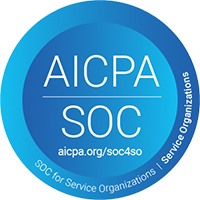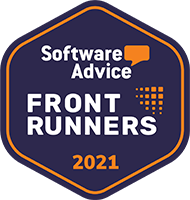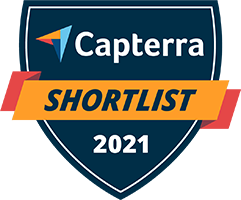The Benefits of Lean Inventory Management for Stockrooms

Lean management originated in Toyota’s quest for the perfect manufacturing process in the auto industry. In the 1940s, Toyota implemented their lean manufacturing program (TPS) which resulted in significant improvements to productivity, efficiency, cycle time and costs.
Lean’s core tenets are simple and are now widespread among industries, but the basic premise is to deliver value from your customer’s perspective, eliminate waste in the process and practice continuous improvement.
When applying the principles of Lean to stockroom inventory management, the approach is to stock inventory for what the customer will be USING during a specific time frame, instead of stocking anything a customer might possibly need. The result is a streamlined stockroom that carries only the necessary items, reduces excess inventory, and lowers carrying costs.
What is Lean Inventory Management?
Lean management builds off of 5 basic principles that work together to achieve maximum efficiency:
1) Identify Value – Start by asking if your organization will benefit from implementing Lean principles by saving effort, time, space and money. Also ask how will your customers benefit.
2) Map the Value Stream – Understand how inventory goes through your stockroom. Do you keep a constant supply of stock on your shelves or does usage determine replenishment parameters? Where does inventory live between arrival and usage?
3) Create a Flow - Make the value-creating steps occur in tight sequence so the product will flow smoothly towards the job, eliminating waste in the process. Look at your process from start to finish and map out what might make the project wait and then implement steps to fix, from overstock to dead stock, to inventory organization and tracking methods.
4) Establish Pull – Lean inventory management is based on a demand-based pull, so inventory should only be acquired when the job demands it. Implementing a pull system for inventory will allow you to optimize resources and deliver products only if there is actual need, instead of a push system which stocks based on what the job might need from outdated data.
5) Practice Continuous Improvement – Continually improve by increasing responsiveness and adaptability. This means you’ll need reliable data on job usage and the right technology, such as the eTurns TrackStock automated replenishmentapp, to increase efficiency and productivity and lower carrying costs.
Creating a Lean Inventory Management Strategy
The Lean system identifies eight areas of waste that organizations should reduce or eliminate to increase efficiency:
- Inventory
- Transportation
- Motion
- Waiting
- Over-production
- Over-processing
- Defects
- Unused Talent
An app like eTurns TrackStock, tracking actual inventory usage, can eliminate much of the waste stockroom managers see daily. TrackStock is a mobile inventory app that increases inventory visibility, optimizes inventory, and lowers procurement costs in stockrooms and service trucks.
With the goal of creating a Lean inventory management strategy, the eTurns TrackStock app can help managers of stockrooms and service trucks eliminate waste in these critical areas:
Transportation –
This includes movement of people, inventory, tools and equipment, or products farther than necessary, which can increase damage, defects and work. With eTurns data on consumption, contractors can route just the necessary amount of product to their stockrooms based on their usage and service truck managers can ensure that the necessary parts are kitted together and on the truck for the technician. This eliminates extra trips back to base or to a hardware store to get a missing part.
Inventory –
This includes excess inventory. However, excess inventory in stockrooms has a cost – whether it’s tying up funds that have potential for other uses or by increased carrying costs, which can equal 25-55% of the inventory value. Excess inventory is caused by over-purchasing and eTurns TrackStock Min/Max Tuning Analytics can make sure that doesn’t happen. Only the inventory needed is replenished.
Motion -
This includes any unnecessary movement of people, equipment or machinery. Efficient stockrooms should be organized so that staff don’t need to walk far to retrieve fast moving items. The eTurns app has a kitting module which helps service truck technicians by having all the items for a particular job gathered together under one part number. This saves them time and motion hunting for all the components for a job. In addition, using eTurns SensorBins with IoT technology, sales reps no longer need to travel to customer stockrooms to perform inventory counts and can better use the time on revenue-generating tasks.
Waiting –
This includes people or production waiting on inventory or equipment. eTurns TrackStock app relies on customer usage data, and combined with Min/Max Tuning, allows stockroom managers to know exactly how much needs to be in stock and how much needs replenishing. And because this can be done automatically, waiting for inventory is greatly reduced.
Over-Production –
This occurs when a product or part of the product is manufactured before it is being asked for or required. In inventory terms, it’s also created by overstocking parts and value-added work, such as kits or assemblies.
Over-Processing –
This refers to doing excess work, or having more steps in a product or service than what is required by the customer. eTurns addresses this waste in several ways. First, with the eTurns TrackStock app, inventory replenishment can be set up to be done automatically. No extra effort involved once setup is complete. For example, for contractors, eTurns automatically updates truck inventory and triggers replenishment when quantities fall below a minimum. Orders are then sent to distributors to resupply the parts.
Secondly, eTurns offers multiple techniques to replenish storeroom inventories. If a user wants to do VMI/CMI, eTurns automates replenishment by using an iPhone, iPad, or iTouch to scan barcodes of those items (from any supplier) needing replenishment. With consigned inventory, eTurns tracks consumption; when that usage decreases on hand quantity below a minimum level, it triggers replenishment as well as the opportunity to invoice.
Thirdly, the app is supplier independent so that the stockroom technician can use one tool to track the consumption and replenishment of all suppliers’ items. TrackStock will automatically send orders to the correct supplier.
Unused Talent -
Even though it was not part of the TPS original 7 wastes, most organizations now take into account an 8th waste: human potential. This is especially important today with the skilled-labor shortage. Using eTurns to automate inventory replenishment with scanners, RFID and SensorBins allows organizations to re-allocate and upskill workers doing these tasks. Distributors no longer have to send reps out to customer sites to do inventory counts, but would instead use their skills for revenue-generating work.
An eTurns Case Study in Lean Inventory Management
The Problem:
A preferred supplier to industry-leading Fortune 500 companies pursued strategies to expand and improve their capabilities to acquire quality materials fundamental to the manufacture of their products. This need was further compounded due to the tremendous growth of their customer base. As a result, the procurement of these components had become a time-consuming task that shifted focus away from their core competency of manufacturing the highest quality products possible.
The Solution:
They worked with a distributor who recommended the implementation of the eTurns stockroom inventory management software. The eTurns app significantly reduced acquisition and inventory costs, in addition to transitioning them to a single automated replenishment app for purchases from all suppliers.
Features included:
- Online and offline remote stockroom management
- Parts order and tracking from multiple suppliers
- Barcode capability, label generation and scanning
- 73+ standard reports for inventory/supply chain management
- Barcode kanban ordering or min/max electronic kanban ordering
- Inventory modules to support multisite and multinational stockrooms
The Results:
The eTurns system improved responsiveness to their customers and allowed for the expansion of service offerings, which was a factor in revenue growth from $8.5 million to $13 million in one year alone. They determined that the eTurns cloud-based ordering and reordering capabilities were user-friendly enough to manage effectively, but dynamic enough to deliver inventory reliably and consistently.
For more information on how eTurns TrackStock mobile inventory app can help you achieve Lean stockrooms, increase inventory visibility, optimize inventory and lower procurement costs, reach out to us or try eTurns free for 30 days, including set up and great phone & email support.




